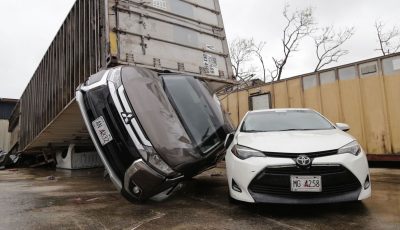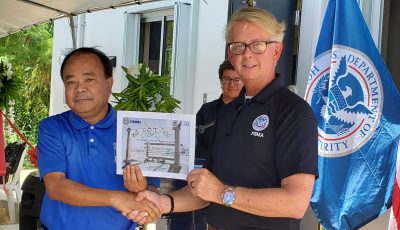Outages inevitable as power poles are replaced
The Commonwealth Utilities Corp. is asking for the community’s understanding as it replaces wooden power poles damaged by Typhoon Soudelor in 2015 with concrete ones, resulting in intermittent power outages.
CUC executive director Gary Camacho and project engineer Adrian Reyes said they have three months left to meet the August deadline set by the Federal Emergency Management Agency to replace the power poles.
The project is also in collaboration with the local capital improvement projects office.
CUC personnel and its contractor are replacing a total of 787 power poles.
“There’s a deadline in August that we need to meet and it is imperative that the community understands that there’s going to be a number of lateral outages, which is streets, and some feeder outages,” Camacho told Saipan Tribune Wednesday.
“This has been going on for months and we’re asking for the patience and understanding of the public. The outages will be throughout the island and CUC will diligently, along with our contractor, to finish the project on time.”
All concrete power poles are pending installation on Saipan, with the scope of work in reference to a project worksheet done by CUC Power Division engineers, based on their assessment a day after Soudelor.
“The day after, the engineers from CUC’s Power Division did an assessment of the damage that resulted from the typhoon. The damage that we submitted to FEMA for the 406 Hazard Mitigation project was concentrated only on Saipan,” said Reyes.
The project cost for labor, materials, and other equipment are 100 percent covered under FEMA’s Section 406 assistance program.
Reyes said the public should understand that everyone’s safety is their top priority. “Now we have a more durable and hardened concrete power poles, to withstand strong storms and more durable from future storms.”
“The power outages are executed to allow our CUC linemen and contractor to safely replace these power poles. …It is not for the purposes of inconveniencing the customers but, rather, we had to work in a safe [manner].”
He added: “We want to have no accidents.”
The project is a FEMA Hazard Mitigation Grant 406, which is a public assistance program that provides funds for mitigation measures to repair disaster-damaged facilities.



























